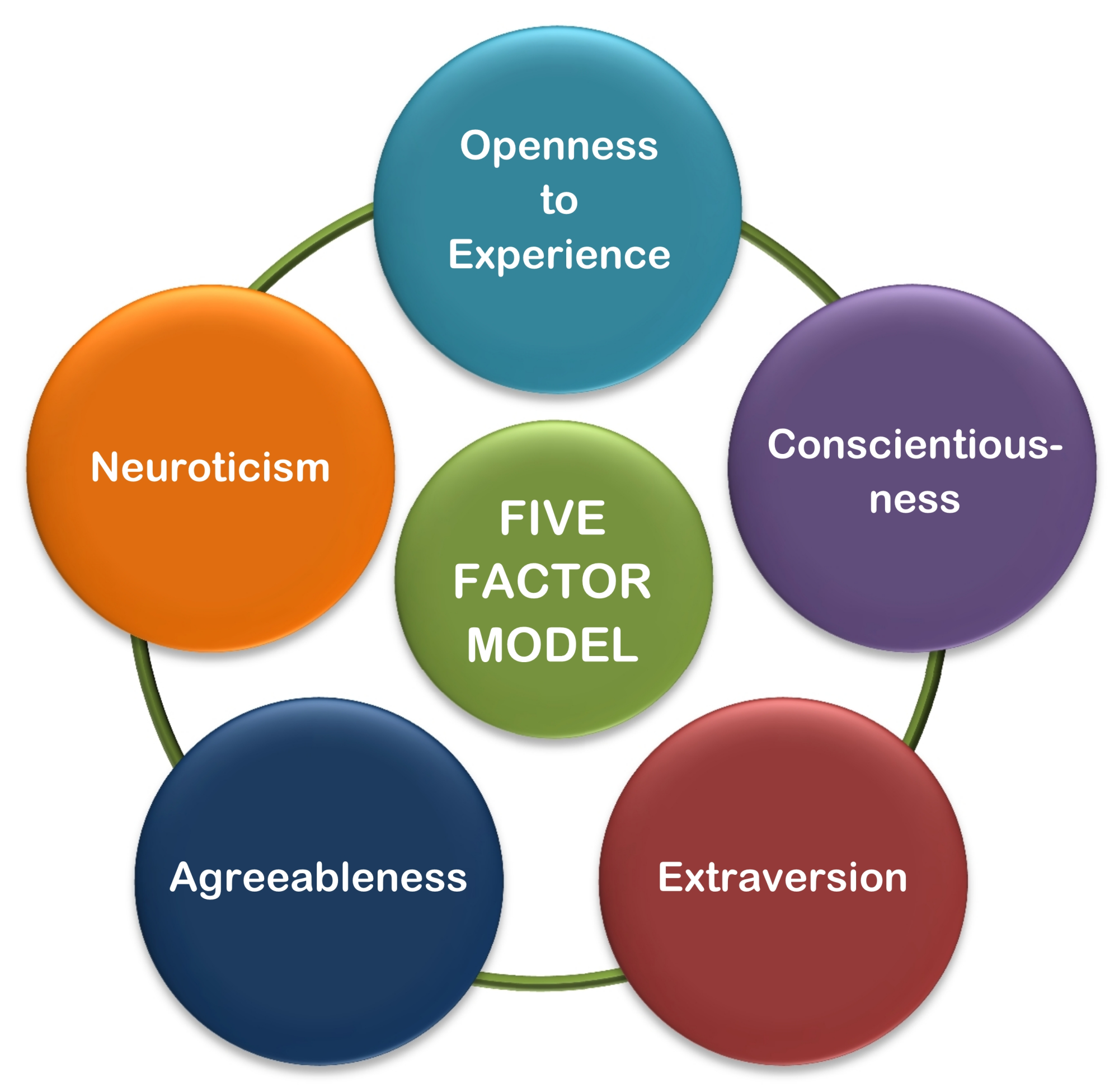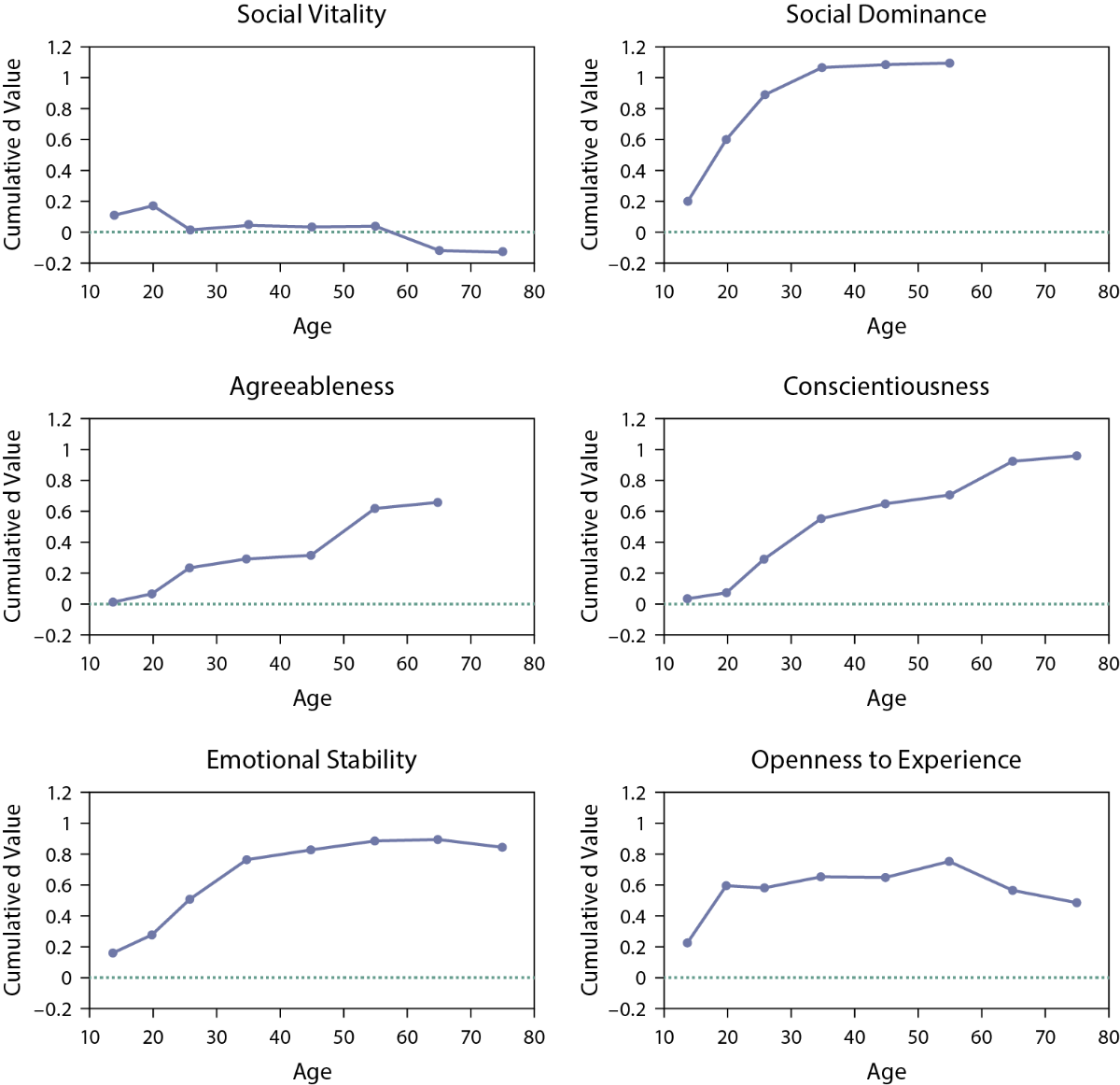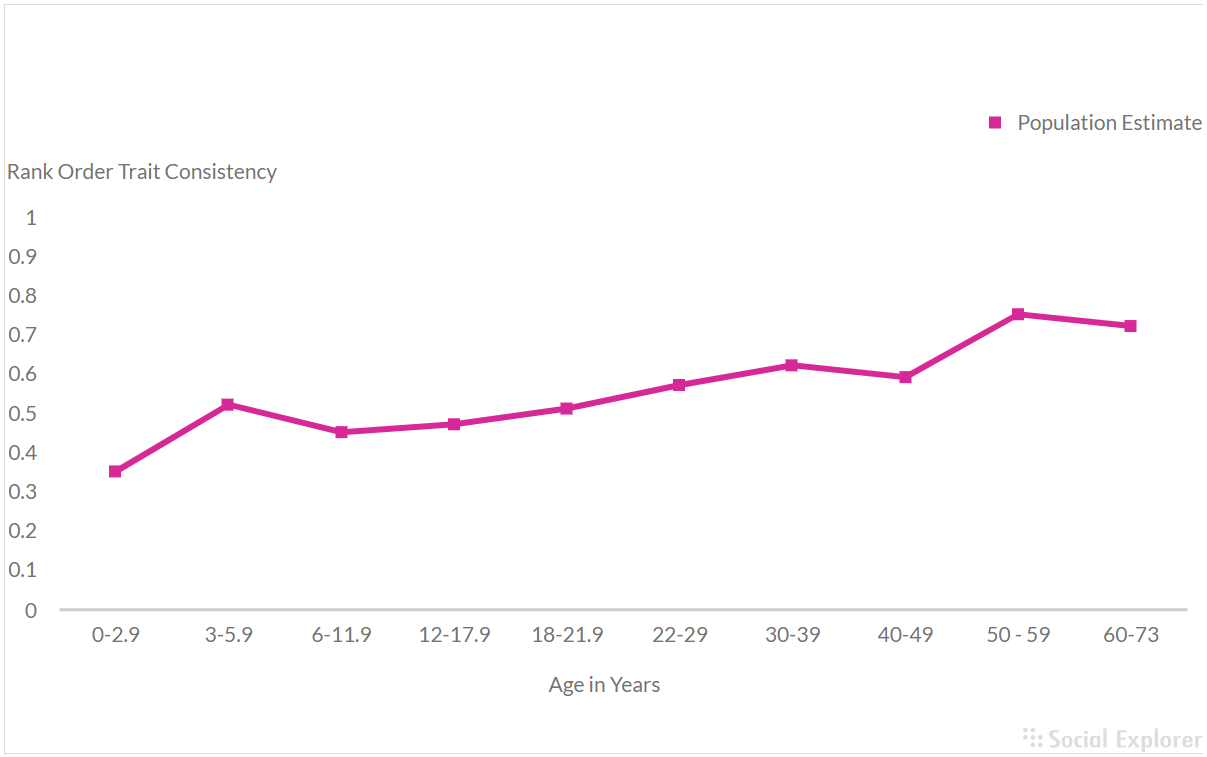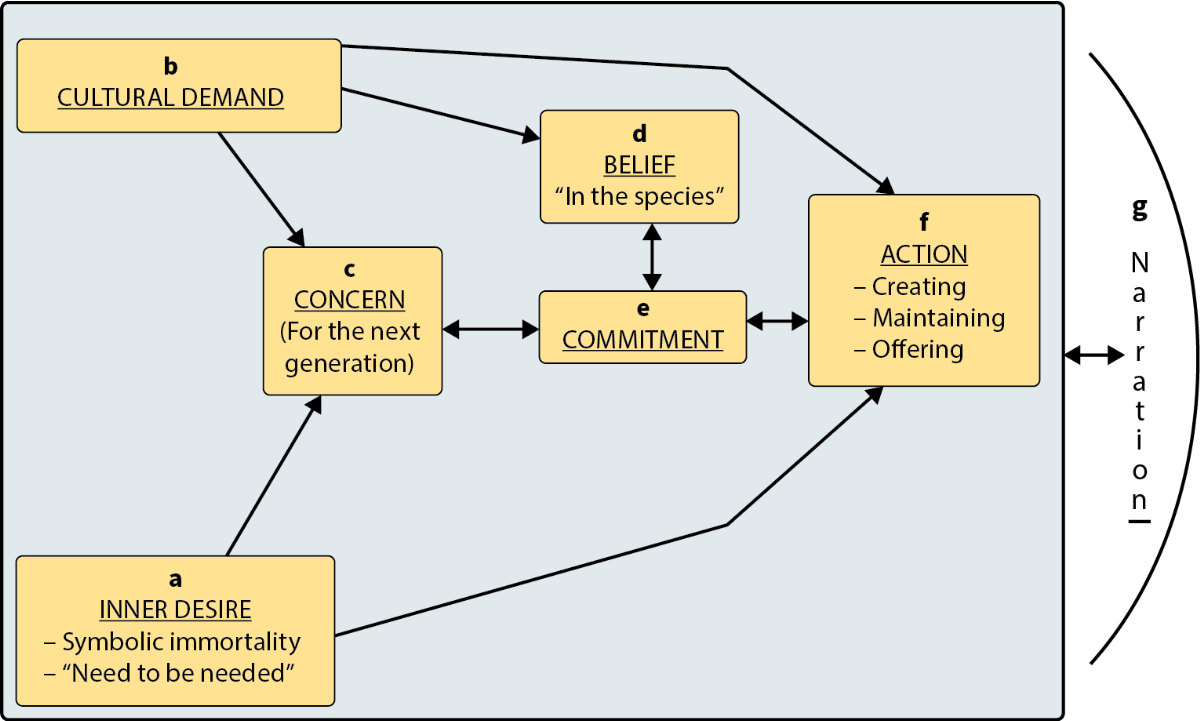Chapter 9: Aging and Personality Development
1/20
There's no tags or description
Looks like no tags are added yet.
Name | Mastery | Learn | Test | Matching | Spaced |
|---|
No study sessions yet.
21 Terms
Describe dispositional traits and life narrative as two levels of personality analysis.
Dispositional traits refer to aspects of personality that remain relatively consistent across contexts, while a person’s life narrative encompasses integrative aspects that tie experiences together and provide a sense of identity.
Explain the difference between personality traits and personality traits.
Personality traits refer to an individual’s characteristic way of behaving, thinking, and feeling, while personality states reflect brief changes in personality in response to internal or external events.
Explain how personality traits are measured.
Personality traits are measured in two main ways: mean-level change, which looks at how mean levels of a trait change across different time points within a group, and rank-order consistency, which refers to the stability of an individual’s rank-order within a certain group over time.
Describe the Five-Factor Model of Personality.
Developed by Costa and McCrae, the Five-Factor Model (FFM) is the most widely accepted trait theory in personality psychology; they used factor analysis to identify three factors: neuroticism, extraversion, and openness, assessed using the NEO Personality Inventory (NEO-PI), and later added agreeableness and conscientiousness in the revised version (NEO-PI-R), with all five traits collectively known as the "Big Five."

Describe the “hard plaster hypothesis" and explain whether it is effective in evaluating personality change in present-day young adults.
McCrae and Costa (1999) argued that personality change would occur before age 30, with little change thereafter, later coined the “hard plaster hypothesis.” At the time, it was common to believe that personality did not change with age. The idea that personality is set like “plaster” by age 30 makes sense for the baby boomers, who achieved major milestones like having a stable career, getting married, and becoming a parent by age 30. However, evaluating personality change in present-day 30-year-olds may not show trait stability because of the delayed attainment of milestones in this cohort.
Describe mean-level and rank-order changes in personality across adulthood.
There is strong evidence that personality traits show mean-level changes with age; research on the Big Five traits shows a normative pattern where people become more agreeable, emotionally stable, and conscientious, and less neurotic as they get older (maturity principle), while rank-order change tends to increase steadily with age and levels off around age 50.


Describe cross-cultural differences in personality traits.
Kajonius and Mac Giolla (2017) coined the term “similarities hypothesis,” which refers to the general finding that there are few differences in the Big Five traits across cultures. McCrae and Terracciano (2005) studied 50 ethnic groups and found that all Big Five factors were present in most, but not all, of the groups studied. Cheung et al. (1996) developed the Chinese Personality Inventory (CPAI), which includes factors such as dependability, accommodation, interpersonal relatedness, and social potency. They found that the interpersonal-relatedness (IR) factor was not related to any NEO-PI-R factors, and that openness to experience from the NEO-PI-R was not related to any of the CPAI factors, suggesting that openness to experience may be more important in Western cultures. These findings were confirmed in later studies using the CPAI-2 and MMPI-2 (Cheung et al., 2008; Cheung, 2009), but later research showed that the IR factor could also be found in Asian and American samples, especially among Asian-American students. The CPAI-2 was later renamed the Cross-Cultural (Chinese) Personality Assessment Inventory.
Describe the relationship between health and illness and personality traits.
Cardiologists Friedman and Rosenman first linked the Type A behaviour pattern (being work-oriented, driven, competitive, hostile, and easily angered) to the development of coronary artery disease (CAD). However, later research found a weak or no correlation between TABP and CAD. Studies have shown that low levels of conscientiousness are linked to higher mortality. The relationship between neuroticism and mortality is less clear, with mixed findings. Weston and colleagues (2015) found that high conscientiousness decreased the probability of diagnoses of stroke, high blood pressure, diabetes, and arthritis, while high levels of neuroticism increased the risk of developing diseases such as lung disease, high blood pressure, and arthritis. Other studies have found that low conscientiousness and high neuroticism are linked to unhealthy behaviours such as alcohol abuse, smoking, physical inactivity, and obesity. Terracciano and colleagues (2014) found that high neuroticism and low conscientiousness increase the risk of developing Alzheimer’s disease. In a separate study, Terracciano and colleagues (2013) reported that high neuroticism and low agreeableness were linked to more advanced neurofibrillary tangles. Finally, Tomika Yoneda and colleagues (2020) found that rising levels of neuroticism may be an early sign of dementia.
Identify and describe proposed theories of personality change.
The biological essentialist perspective focuses on the role of genetics in shaping personality and is the basis of the Five-Factor Model (FFM). Another approach to understanding personality change proposes that environmental factors account for changes in personality traits across the lifespan. This approach is known as the contextualist model. The correspondence principle suggests that personality stability is influenced by the active choices we make. The interactional model considers both the person and the environment in the development of personality.
Describe gender differences over the course of the lifespan among the Big Five personality traits.
Many studies have examined gender differences in personality across the lifespan, but the findings are mixed. For example, some studies show an increase in neuroticism in women versus men in later life, whereas other studies show the opposite.
Describe the differences between Freud, Jung, and Erikson’s theories of personality development.
Freud proposed that personality development is complete by adolescence. Jung was the first theorist to argue that the development of personality occurred through adulthood, however, it was Erikson who provided the first widely accepted theory of personality development over the lifespan.
Explain how generative concerns change across the lifespan and identify what factors might account for this change.
Cross-sectional research has shown that generativity concerns vary with age, in that generative concerns are highest in mid-life. Einolf (2014) found that generative concerns peaked in mid-life and then declined in adults 60 years of age and older. Life events, environmental factors such as opportunities to give back through activities like volunteering or mentoring youth, and access to places where individuals can contribute are all relevant factors. Lack of transportation options and impairments in physical health are important factors that can affect the ability of some older adults to contribute to their community. Other factors that can affect generativity in older adults include isolation and ageism. Opportunities to learn and develop the skills to be successful while helping in the community also need to be offered, along with incentives that encourage older adults to learn new skills. Glass et al. (2004) introduced Experience Corps, a program where older adults help children in underserved schools. In Canada, Elder Service Corps gives older adults a chance to lead and carry out community projects.

Describe research on integrity and despair.
Research on integrity and despair has explored how older adults engage in the life-review process, which not only involves remembering and reviewing past events, but also dealing with the emotional side effects. Ingersoll-Dayton and Krause (2005) found that one way older adults engage in life review is by changing the standards they use to judge past mistakes, which helps them view their past behavior as forgivable. Torges et al. (2008) showed that resolving regret in mid-life is linked to higher levels of ego integrity later in life. Hearn and colleagues (2012) developed and validated a new measure of integrity versus despair using the Self-Examination Interview. This measure includes four categories of integrity.

Explain the meaning of narrative identity and describe how it changes with age.
Narrative identity is our internalized and ever-changing story about ourselves. McAdams and colleagues (2006) found that college-age participants reported richer and more complex life narratives over a three-year period. Research from cross-sectional studies shows that middle-aged adults tend to construct more complex and coherent life narratives than younger adults. Pasupathi and Mansour (2006) also found that the life narratives of middle-aged adults were more psychologically sophisticated than those of younger participants. Singer and colleagues (2007) conducted a cross-sectional study with older adults and found that their self-defining memories were more positive and had greater integrative meaning than those of college-age students.
Describe the effects of culture on narrative identity.
Our life narrative is shaped by cultural stories passed down from parents and grandparents. These stories often reflect belief systems, appropriate ways to behave, or ideas about what goals are worth pursuing. Narrative identity is formed by accepting and personalizing the stories given to us through our culture.
Describe the meaning of mid-life and how it is typically defined by researchers.
Many researchers argue that mid-life is better defined by roles, life experience, and timing of events in a person’s life than by chronological age.
Explain whether a midlife crisis is fact or fiction and summarize major criticisms of research investigating the mid-life crisis.
The concept of a midlife crisis was coined by Canadian psychologist Elliott Jacques to describe the emotional turmoil some people experience in middle age when they realize they may have more life behind them than ahead. Levinson (1978; 1986) supported this idea within a developmental framework, suggesting that the crisis typically occurs between ages 40 and 45 and is most common among men. However, this research has faced major criticism. Early studies relied on clinical samples that portrayed middle age in a negative light, used unstandardized qualitative interviews, and favored cross-sectional designs over longitudinal ones. Sample sizes were small and not representative of the general population. Freund and Ritter (2009) argue that while the term "midlife crisis" can still be useful, it may be more accurate to view it as a time of reflection and correction rather than dramatic upheaval.
Describe what a personality disorder is and how it interferes with daily functioning.
A personality disorder (PD) is defined in the DSM-5 as “an enduring pattern of inner experience and behaviour that deviates markedly from the expectations of the person’s culture.” People with PDs experience many difficulties, including problems in both personal and work-related relationships. Depression, anxiety, and other mental health issues are also common. PDs often interfere with the development of a therapeutic relationship between the clinician and the patient, which in turn impairs the course and outcomes of treatment for mental health disorders such as anxiety and depression. PDs are also associated with increased use of medical services and poorer health outcomes.
Describe the prevalence of personality disorders in adults and older adults.
About 10 percent of adults are estimated to have a personality disorder. While cross-sectional research suggests that prevalence declines with age, this remains a controversial topic.
Identify measurement and classification issues that arise when diagnosing an older adult with a personality disorder.
Classification systems like the DSM-IV and DSM-5 were developed without considering older populations, which means many PDs in late life go undetected. One major problem is that diagnostic criteria require the disorder to be traceable to adolescence or early adulthood. This is challenging when older adults have memory impairments or no family members to confirm this information. Clinicians also face the problem of determining whether symptoms reflect a true PD that was previously hidden or are simply a response to recent life stress or trauma. Additionally, the features of PDs can change with age, further complicating diagnosis.
Describe the relationship between personality disorders and health outcomes.
PDs are associated with a range of poor health outcomes. Recent research has found that PDs are linked to increased healthcare use and decreased health-related quality of life among middle-aged adults. Other studies have found associations between PDs and sleep disturbance, obesity, chronic pain, headaches, and substance use disorders. Individuals with PDs are at a higher risk of developing heart disease and stomach disorders. Schuster and colleagues (2013) found that adults aged 65 and older with PDs had a higher risk of medical conditions such as high blood pressure and heart disease.